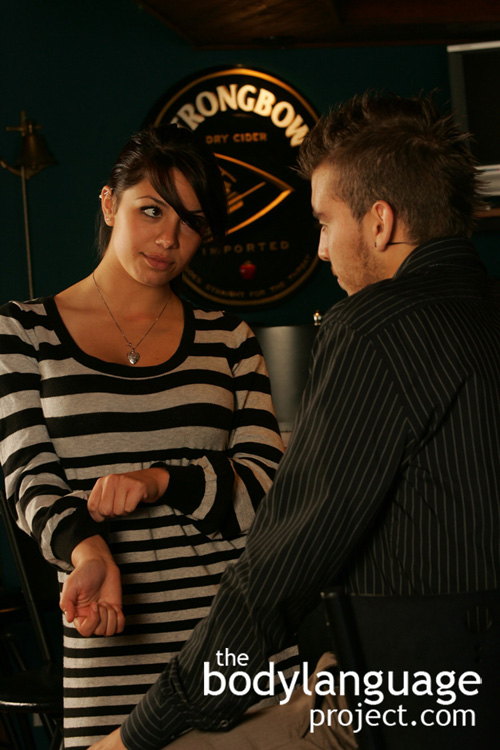When men and women initiate intimacy they always follow a very specific pattern. While the list isn’t entirely rigid it represents the most universally comfortable way men and women come together. There are cases when some of the steps are skipped, but in most cases, they are simply accelerated making it appear as though steps went missing. While I have no experience with adult movies, I have been told that even therein, men and women follow these steps closely. Here are the ten steps to creating intimacy.

Hand touches shoulder. This form of touching is risky because it implies
some from of connection. If absent, can still be rebuffed with minimal damage and embarrassment, but still breaches personal space boundaries.
[A] Eye to body. The eyes first make contact with the lower part of the body, but hit the face in general, the assets – buttocks and crotch, chest or breast, the legs of women and the overall build of men. If both see mutual attraction they continue to the next step.
[B] Eye to eye. Mutual eye contact is established which includes a long intimate gaze where the eyes travel over the face including the lips.
[C] Hand touches hand. Light touching of the hand, or hand-holding is often the first way distance is breeched. The hand is intimate, yet risk-free, unlike say the breasts or the genitals! Other acceptable first touches include incidental touches such as an elbow, forearm or task directed actions such as helping to put on a coat.
[D] Hand touches shoulder. This form of touching is risky because it implies
some from of connection. If absent, can still be rebuffed with minimal damage and embarrassment, but still breaches personal space boundaries.
[E] Arm encircles waist. In this step, the arm is lowered closer to the genitals so is more intimate. This form of touching, since it requires permission and attraction, which may or may not be present, is highly risky and can spell disaster if not welcomed. However, if it is accepted, it can be used as a test to move quickly to the following step.
[F] Mouth touches mouth. This step is fairly self explanatory but is a huge milestone in a relationship. Most women remember their first kiss long after men do, but even if men forget the exact details after some time, they will always recall their conquest! When two people kiss they exchange a lot more than just spit. Chemicals in the saliva are linked to taste and if things don’t jive at this moment, everything can unravel, and quickly. Women are often heard saying “things weren’t right” or that “he was a bad kisser” and it usually has to do with pheromones they find unattractive, rather than his lack of skill. Women will let men they find attractive kiss sloppily, but mediocre men need to perform at a higher level while kissing! It has been postulated by researchers that if the unique chemical signature of men and women is too closely alike, attraction fails to materialize, most probably due to a desire to avoid inbreeding. Family members carry similar genes and therefore give off similar odors signatures and so kissing is one way to test things out before getting too heavy.
[G] Hand touches head. The head is a vulnerable part of the body so we only allow those we really trust to get close enough to play with our hair or ears or whatever. Touching and stroking the hair, plays an intimate and important role in kissing, especially the good kind of kissing.
[H] Hand touches body. Having passed all the tests listed above, couples will permit each other to explore various parts of their body, at the exclusion of the breasts and crotch and usually touching happens over the clothes. Sometimes brief forays may be permitted, but this sort of intimacy still requires caution. Touching includes stroking, fondling, tickling, caressing and are precursors to sexual intimacy. If all goes well, both bodies will become aroused to the point of no return, pushing them into the next step.
[J] Mouth touches body. Included in this step is hand under clothing. Usually either mouth or hands are permitted to touch the body. This step opens up fondling of the breasts under the clothes, and usually even permits the touching of the genitals over the clothes.
[K] Hand caresses genitals and genitals touches genitals. From steps H onward, body language lacks a visual component and so people usually dim the lights, turn them out altogether or close their eyes so they can eliminate distraction and shift their focus onto their sense of touch and smell. Intercourse is a primal activity so requires just the right ingredients in just the right ratios to work. If something isn’t quite right, then the sequence can be broken at any one stage, even at the last minute, or so I’m told!






